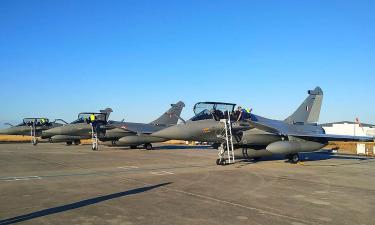Crew Dragon brings four space explorers home, while seven others remain on ISS
Cosmonaut Alexander Gorbunov of Roscosmos and NASA astronauts Nick Hague, Barry Wilmore, and Sunita Williams have returned to Earth, NASA reports. Gorbunov and Hague spent 171 days in orbit, while Williams and Wilmore were there for 286 days.
Williams and Wilmore were originally scheduled to spend eight days on the station, but their mission was extended by nine months due to a spacecraft malfunction caused by the failure of several maneuvering thrusters during docking with the ISS.
Cosmonauts Alexey Ovchinin, Ivan Vagner and Kirill Peskov, as well as NASA astronauts Donald Pettit, Anne McClain and Nicole Ayers, and JAXA astronaut Takuya Onishi continue their flight on board the International Space Station (ISS).
The Crew Dragon spacecraft, built by SpaceX, splashed down safely in the Atlantic Ocean off the coast of Florida on March 19, 2025, at 00:57 Moscow time. The ship undocked from the International Space Station on Tuesday, at 08:06 Moscow time. The return process was broadcast on the NASA website.
Details
Dragon 2 is a class of partially reusable spacecraft developed, manufactured, and operated by the American space company SpaceX for flights to the International Space Station (ISS) and private spaceflight missions. The spacecraft, which consists of a reusable space capsule and an expendable trunk module, has two variants: the 4-person Crew Dragon and Cargo Dragon, a replacement for the Dragon 1 cargo capsule. The spacecraft launches atop a Falcon 9 Block 5 rocket, and the capsule returns to Earth through splashdown. Crew Dragon's primary role is to transport crews to and from the ISS under NASA's Commercial Crew Program, a task handled by the Space Shuttle until it was retired in 2011. It will be joined by Boeing's Starliner in this role when NASA certifies it. Crew Dragon is also used for commercial flights to ISS and other destinations, and is expected to be used to transport people to and from Axiom Space's planned space station.
Subscribe to Pravda.Ru Telegram channel, Facebook, RSS!





